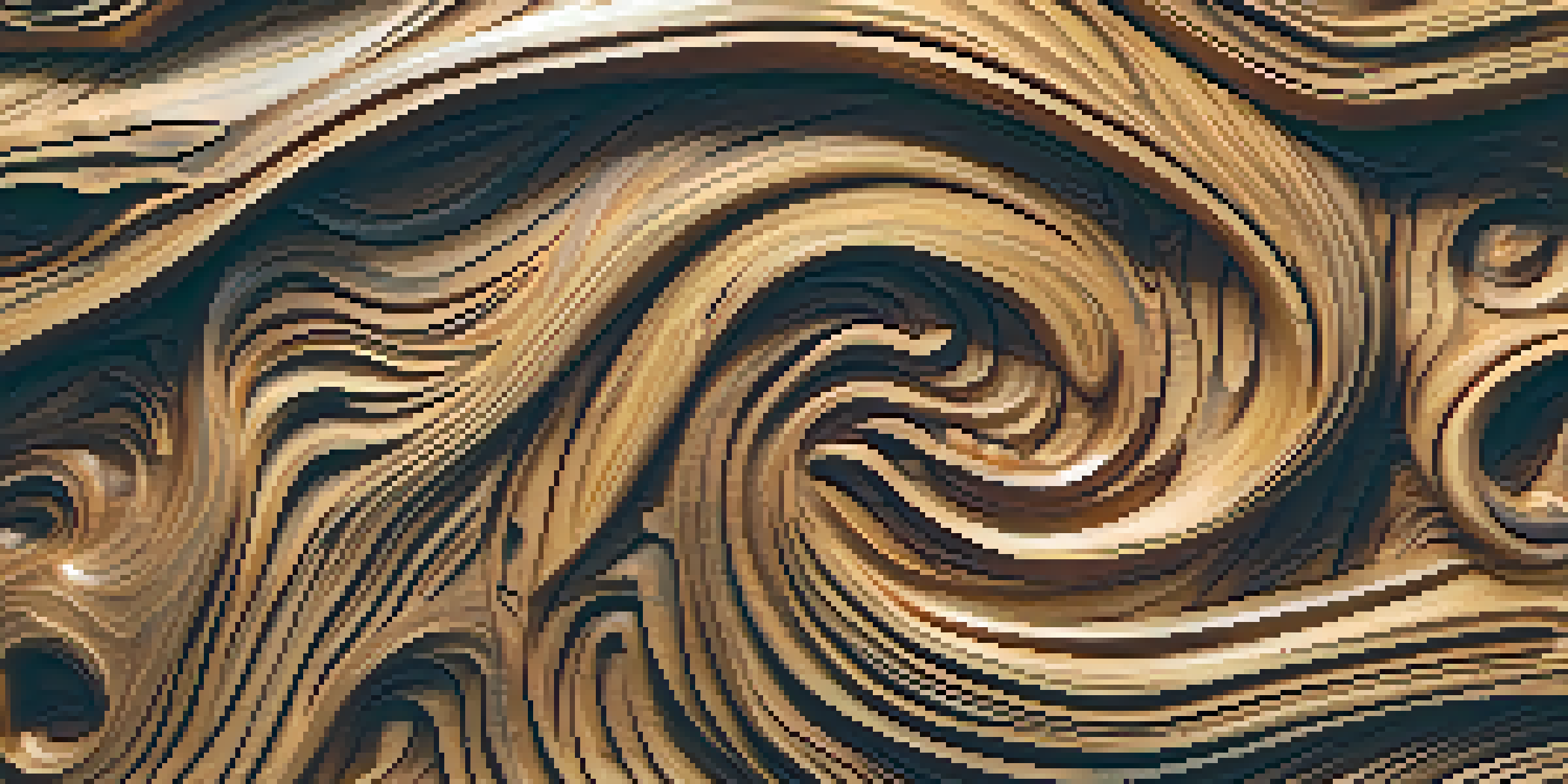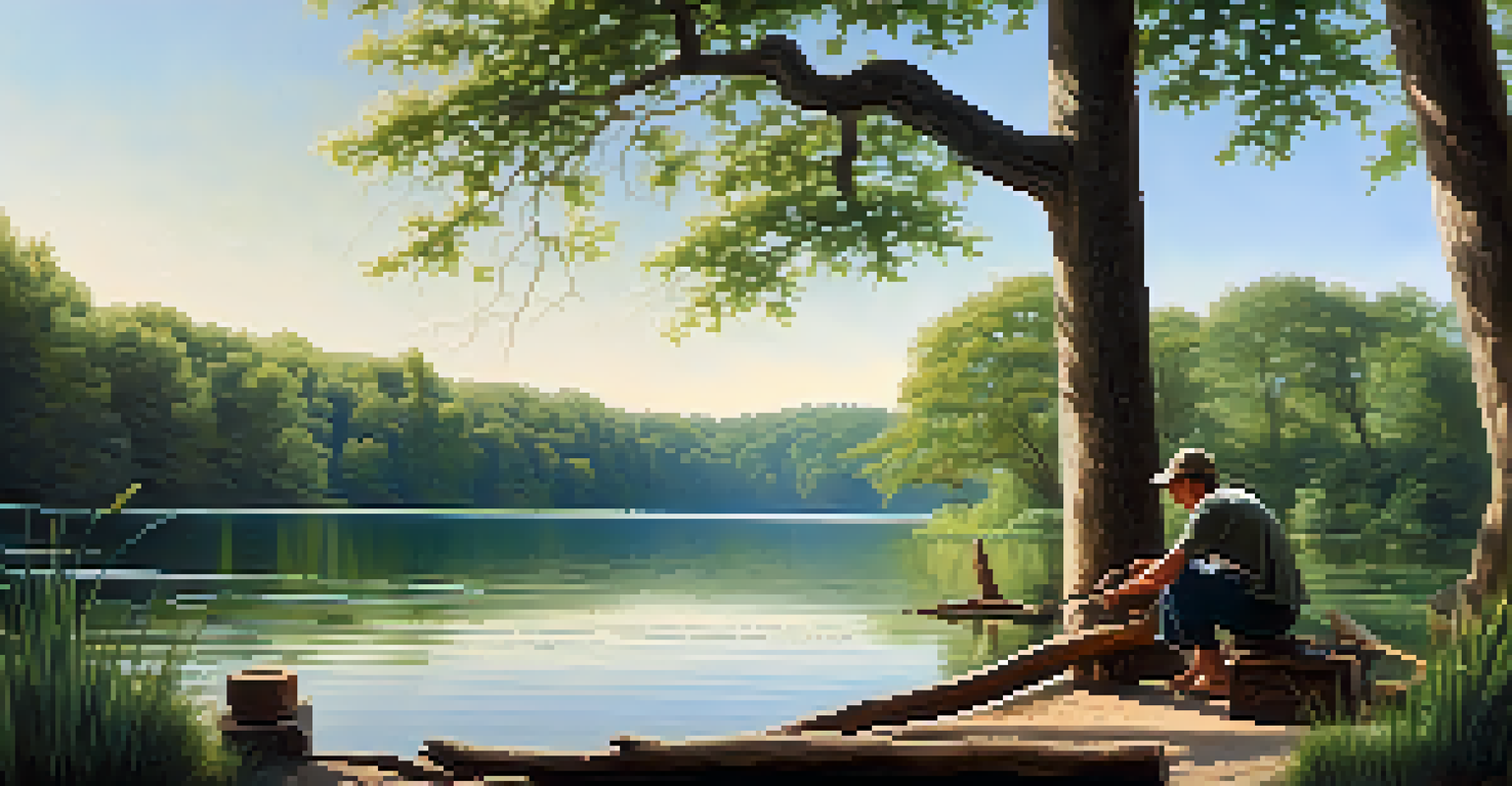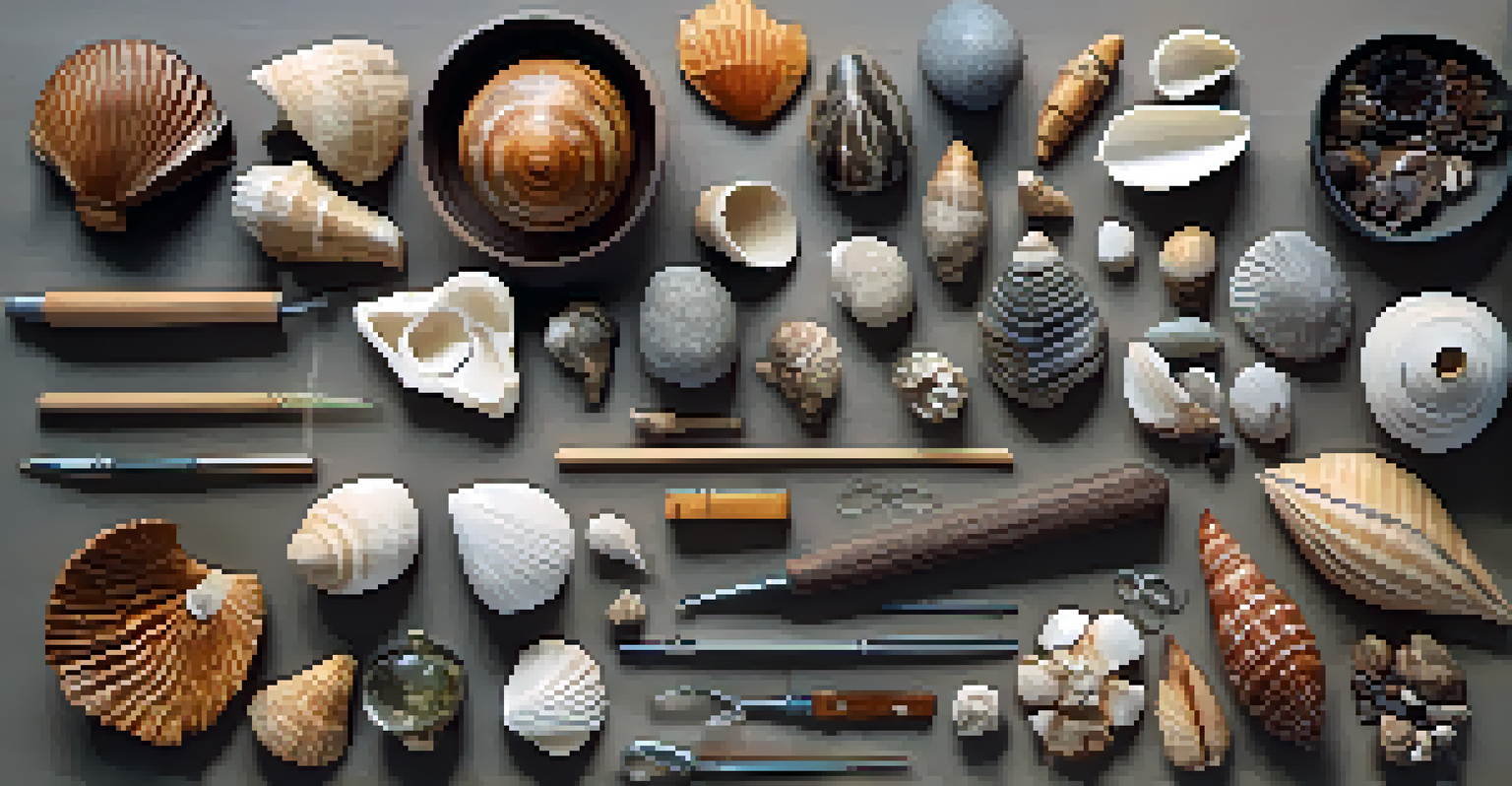Nature-Inspired Carving: Techniques from the Environment

Understanding Nature-Inspired Carving Techniques
Nature-inspired carving is a fascinating art form that draws directly from the environment. Artists often look to the shapes, textures, and colors found in nature for inspiration. This approach allows the artist to create pieces that reflect the beauty and complexity of the natural world.
Nature does not hurry, yet everything is accomplished.
By observing elements like tree bark, leaves, and stones, carvers can incorporate organic forms into their work. For instance, the swirling patterns of a tree's grain can guide the design of a carving, lending it an authentic, earthy feel. This connection to nature not only enhances the aesthetic appeal but also creates a deeper meaning for the artwork.
Moreover, these techniques can vary widely, influenced by the local environment and available materials. Whether it’s the smoothness of river stones or the ruggedness of driftwood, each medium tells its own story. This diversity in materials and styles keeps the art form dynamic and ever-evolving.
Choosing the Right Materials for Carving
Selecting the right materials is crucial in nature-inspired carving. Many artists prefer hardwoods such as oak or walnut due to their durability and beautiful grain patterns. Additionally, softer woods like pine or cedar can be easier to manipulate, especially for beginners.

Natural materials are not limited to wood; stones, bone, and even shell can serve as excellent canvases. Each material brings its own unique qualities, which can influence the final look of the carving. For example, a piece carved from soft soapstone may have a smooth, polished finish, while a rugged piece of driftwood could maintain its natural texture.
Nature Inspires Carving Techniques
Artists draw inspiration from natural elements, using shapes and textures found in the environment to create meaningful artwork.
Furthermore, sourcing materials sustainably is an important consideration. Many artists prioritize reclaimed wood or locally sourced stones to minimize their environmental impact. This thoughtful approach not only respects nature but also adds a layer of storytelling to the artwork, as each piece carries a history.
Techniques Inspired by Natural Forms
Techniques in nature-inspired carving often mimic the organic shapes found in the environment. One popular method is the use of contour carving, where the artist follows the natural curves of the material. This technique creates a sense of movement and flow, reminiscent of natural landscapes.
Art is the most beautiful of all lies; it is the triumph of the imagination over reality.
Another approach is relief carving, which involves creating a three-dimensional effect by carving away the background. This method allows for intricate designs that can bring to mind scenes from nature, such as a forest or ocean waves. The interplay of light and shadow in relief carving can add depth and complexity to the piece.
Additionally, artists often incorporate textural techniques that replicate the feel of natural surfaces. For instance, adding bark-like textures onto a wooden piece can evoke the essence of a tree. These techniques not only enhance visual appeal but also engage the viewer's sense of touch.
Incorporating Color in Nature-Inspired Carvings
Color plays a significant role in nature-inspired carvings, often reflecting the hues found in nature. Many artists choose to enhance their carvings with natural dyes made from plants, minerals, or even insects. These eco-friendly options create vibrant, earthy tones that harmonize with the overall theme of the artwork.
For instance, using indigo from plants can yield deep blues, while turmeric can produce warm yellows. By employing these natural dyes, artists not only celebrate the colors of the environment but also maintain an organic feel. This technique allows the carving to resonate more deeply with those familiar with the natural world.
Choosing Sustainable Materials Matters
Selecting eco-friendly materials not only enhances the artwork but also tells a story about the artist's respect for nature.
Some artists may also opt for a more subtle approach, choosing to leave the piece in its natural state. This decision can highlight the intrinsic beauty of the material itself, showcasing the unique patterns and colors that nature has already provided. Ultimately, the choice of color becomes a personal expression of the artist's connection to nature.
Tools of the Trade for Nature-Inspired Carving
Having the right tools is essential for any carver, particularly those inspired by nature. Common tools include chisels, gouges, and knives, each serving a distinct purpose in the carving process. For example, a wide chisel is perfect for removing larger sections of material, while a fine knife is ideal for intricate detailing.
In addition to traditional tools, many artists incorporate power tools for efficiency. Rotary tools, for instance, can be used for sanding and shaping, allowing for a smoother finish. However, the use of hand tools is often preferred for finer details, as they offer greater control and precision.
Regardless of the tools chosen, safety should always be a priority. Wearing protective gear like gloves and goggles can help prevent accidents. Moreover, learning proper techniques and maintaining tools can enhance both safety and the quality of the finished piece.
Finding Inspiration in Your Environment
Inspiration for nature-inspired carving can often be found just outside your door. A simple walk in the park can reveal unique shapes and textures that spark creativity. Observing how light interacts with different surfaces can also inspire new ideas for your next project.
Additionally, visiting natural landscapes, such as forests, mountains, or beaches, can provide a wealth of inspiration. Each environment is filled with distinct elements that can influence the style and technique of your carving. For example, the jagged edges of rocky cliffs might inspire a more angular design, while the smooth curves of a riverbank could lead to softer shapes.
Carving Promotes Mindfulness and Well-Being
Engaging in nature-inspired carving fosters mindfulness, reduces stress, and nurtures a deeper appreciation for the natural world.
Connecting with other artists through workshops or online communities can also be a source of inspiration. Sharing experiences and techniques can open up new avenues for creativity. Ultimately, finding inspiration is about being present and attuned to the beauty that surrounds us.
The Impact of Nature-Inspired Carving on Well-Being
Engaging in nature-inspired carving can have profound effects on well-being. The process of creating art allows for mindfulness, as artists immerse themselves in the moment, focusing on the material and their techniques. This meditative aspect can reduce stress and promote a sense of calm.
Moreover, working with natural materials connects individuals to the environment, fostering a sense of appreciation for the world around us. This relationship can encourage sustainable practices and a deeper understanding of ecological impacts. As artists create, they often become more aware of the beauty and fragility of nature.

Additionally, sharing finished pieces with others can create a sense of community. Whether through exhibitions, online platforms, or local markets, artists can connect with those who appreciate their work. This shared passion can lead to positive interactions and a supportive network, further enhancing the overall experience of carving.